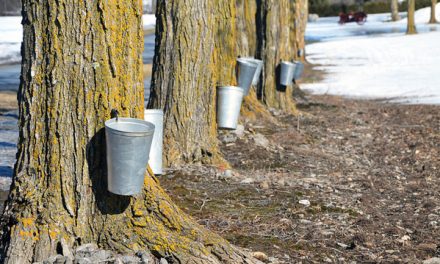The global cosmetics manufacturing industry has experienced strong growth in recent years. In 2018, the value of the global cosmetics market was $507.8-billion US. The market was projected to value at about $758.4-billion US by 2025 as reported by (Statista.com).
This industry includes manufacturing of personal care products, such as skincare, haircare, make-up, perfumes, deodorants, and oral cosmetic products. Globally, the production of cosmetics and beauty products is controlled by a handful of multinational corporations. However, the demand for cosmetics made with natural products is increasing due to the growing consumer awareness of natural cosmetics and the desire of cosmetics companies to replace synthetic ingredients with natural variants to avoid side effects.
The bioactive natural products are a rich source of novel therapeutics, they are also used in different pharmaceutical preparations mainly as functional additives. Therefore, the exploration of bioactive molecules from the natural resources continues to play a significant role in fashioning new pharmaceutical uses. Currently, there is a trend in the cosmetics’ industry to use natural products which are mainly derived from plant sources. This topic was discussed in detail in a book published recently by the international scientific publisher Springer, entitled “Bioactive Natural Products for Pharmaceutical Applications”. In this book, a full chapter discussed the importance of natural products in cosmetics. Authors of the chapter, Dr. D. Reddy & Dr. AJ Al-Rajab, discussed different sources of natural products in cosmetics, their applications, and prospects; the following content present some extracts of their work.
History of natural products in cosmetics
People from around the world have been using plant-based substances (natural products) to enhance the appearance since the existence of mankind. In ancient Egypt, about 10,000 BC, humans used scented oils, lotions to clean skin, to soothe, and mask body odour. Then, about 3,000 BC, the use of cosmetics such as hair and skin care products became more common in Egypt and expanded to large parts of Africa and Asia. Historically, women and men applied “kohl” as eye makeup which also protects the eyes from dry winds and sun radiation. Also, castor oil skin lotions and creams were prepared and used to protect the skin. Silent basic natural active ingredients such as almond oil, sesame oil, lily, rosemary, peppermint, rose, aloe, lavender, chamomile marjoram, and thyme oils were used in perfumes. Around 100 AD, Ancient Rome traditionally used make-up and beauty products. It was their trend and faith that became a necessary part of their daily life. Beauty products like body lotions, eyeshadow, eyeliners, talcum powders, nail products, perfumes, and toothpaste products were used by women in Rome daily, while Roman men used natural hair dye. Particularly, beauty products could embellish a woman’s social status, attractiveness, wealth, clothes, and makeup. In 215 BC, Lex Oppia was an extravagance law that was established, to control what gorgeous and luxurious women could purchase and wear. After six years, this law was reversed but people from Ancient Rome took cosmetics to new heights and limits. Now, in Milan, there lives the largest beauty empires in the world. About the year 1910, cosmetics were used more in fashion in Europe and USA when Paris introduced colour makeup. Hence, in 1920s, the film industry introduced in Hollywood had an advanced influence on cosmetics. In the entire world, cosmetics were in short supply between 1939 and 1945 during the Second World War. It is due to the war, that alcohol and petroleum products are the active ingredients of several cosmetic products. The late twentieth century, between 1960 and 1970s, cosmetic products were used to objectify women. In 1970s, it was a trend to develop natural looking products. Coincidently, different lipstick colours (like green, red, lilac, silver and pink), non-allergenic cosmetics makeup powders with longer staying power were developed, and males started to use cosmetics to improve facial features. The most popular cosmetics that have been developed are masks for dark circles, age spots, blemishes, and large pores on the skin.
Source of natural products in cosmetics
Natural products are generally acquired from aromatic and medicinal plants, mixture of volatile and non-volatile chemical constituents with strong odours. Natural products are considered one of the most controlled plant products in agriculture, as they exhibit antiviral, antibacterial, anti-cancer, antioxidant, antidiabetic, insect repellent, antifungal, anti-inflammatory, and cosmetic properties; from willow tree bark, Digitalis lanata flowers, and opium, medicinal products derived as aspirin, digoxin, and morphine, respectively. Also, extracts from tamarind (Tamarindus indica) and yellow trumpets (Sarracenia alata) areal parts and seeds contain polyphenols, flavonoids, and hemicellulose xyloglucan that were used for skin protection from sun radiation. Essential oils extracted from West Indian woodnettle (Laportea aestuans) are used as facial toners, lotions, lip balms, ointments, creams, scrubs, massage oils, masks, and shampoos for antidandruff and used for treatment for eczema, acne, chicken pox, insect bites and scarring from burns. The essential oils of some plants could be used as perfumes, flavouring agents and fragrances for different cosmetics and cosmeceuticals.
Prospects of natural cosmetics
Globally, more than 5,000 plants are used in cosmetics and cosmeceuticals. Currently to develop cosmetics and cosmeceuticals, natural products are an untapped reservoir. This clench identifying and developing many plant-derived natural beauty products. For example, Achiote (B. orellana) extracts are used for orange-red wax or lipstick, body and facial embellishment, powder, nail polishes, eye shadows, and cream blushes. Sour plum (Ximenia american) has been distributed in Africa, its extracts are used in traditional medicinal system like skin problems, angina, fever, toothache, and others. It is also used traditionally in cosmetics such as lipsticks, lubricant, soaps, vegetable butters, emollient, conditioner, body massage oil, hair oil and conditioner and skin softener. The early shoots of sour orange (C. aurantium) chewed for fresh breath in elderly women in Creole, as well as essential oils from this plant might be used in soaps, skin care products, deodorants, and mouthwashes. Moreover, essential oils from seeds of Brazilian teak (Dipteryx odorata) are extensively used in the perfume industry due to major amounts of coumarins with pleasant odours and also used in preparation of skin and hair care products. On the other hand, an important pathology to take advantage of these opportunities to develop active chemical constituents, mechanism and its characterization must be necessary for cosmetics and cosmaseuticals. For example, Aloe vera is used for wound healing, but it needs high levels of supporting evidence and its promoting activity, A. vera analog products are used as topical agents for treatment of skin lesions. The Acai palm (Euterpe oleracea) products are used worldwide in most foods, cosmetics, and cosmeceuticals; but health and scientific evidence are still insufficient. Throughout the decades, enormous understanding of cosmetic skin formulations and skin biology was developed. Different types of commercial cosmetics are available for skin care products such as skin whitening, skin protection lotions, skin creams, and anti-aging. Several natural products are serving the cosmetic industry in addition to their medicinal benefits to the skin. Authors concluded that more research efforts are required for delivery of natural products cosmeceuticals ingredients and report of their activities in cosmetic field could lead to the development in the next decade.












